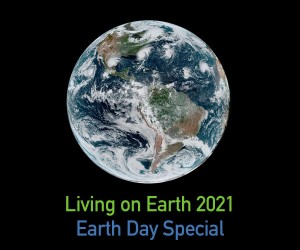From the Article by Jeremy Brecher, Common Dreams, June 1, 2021
At the end of March 2021, President Joe Biden laid out his $2 trillion American Jobs Plan–part of his “Build Back Better” infrastructure program–to “reimagine and rebuild a new economy.” Congress is expected to spend months debating and revising the plan. The public and many special interests will play a significant role in that process. President Biden has promised to follow up with additional proposals to further address climate policy and social needs.
Many particular interests will seek to benefit from the overall Build Back Better program–and that’s good. But as Congress and the public work to shape the ultimate form of that program, we also need to keep our eyes on the ultimate prize: combining climate, jobs, and justice. What policies can integrate the needs of working people, the most oppressed, and our threatened climate and environment?
The Green New Deal reconfigured American politics with its core proposition: fix joblessness and inequality by putting people to work at good jobs fixing the climate. The Biden administration’s Build Back Better (BBB) plan has put that idea front and center in American politics. Now we need to specify strategies that will actually achieve all three objectives at once.
There are many valuable plans that have been proposed in addition to Biden’s Build Back Better plan. They include the original Green New Deal resolution sponsored by Sen. Ed Markey and Rep. Alexandria Ocasio-Cortez; the THRIVE (Transform, Heal, and Renew by Investing in a Vibrant Economy) Agenda; the Evergreen Action Plan; the Sierra Club’s “How to Build Back Better” economic renewal plan; the AFL-CIO’s “Energy Transitions” proposals; the BlueGreen Alliance’s “Solidarity for Climate Action,” and a variety of others. All offer contributions for overall vision and for policy details.
There are six essential elements that must be integrated in order to realize the Build Back Better we need for climate, jobs, and justice:
1. Managed decline of fossil fuel burning
2. Full-spectrum job creation
3. Fair access to good jobs
4. Labor rights and standards
5. Urgent and effective climate protection
6. No worker or community left behind
These strategies can serve as criteria for developing, evaluating, and selecting policies to make Build Back Better all that it could be.
1. Managed Decline of Fossil-Fuel Burning
Biden’s Build Back Better plan seeks 100% carbon-free electricity by 2035 and net zero GHG emissions by 2050. No firm goal has been announced for 2030, but Climate Action Tracker says the U.S. needs to cut around 60% of its GHG emissions by 2030 to reach this 2050 goal.
Biden’s timetable is not enough to halt colossal climate damage. It will go on adding to the GHG emissions that are already in the atmosphere. But it does provide targets for initial planning and emission reductions, which can be augmented later. The most important thing is to get started on reducing emissions right now and start planning for the subsequent stages.
Right now we are seeing a chaotic, unmanaged decline of fossil-fuel industries. This is most evident in coal, where declining demand and collapsing profitability are leading to massive mine and power plant closings, job loss, destruction of coal communities, and decimation of unions. In the COVID-19 pandemic we also saw devastation of oil and gas employment and workers. With the fall in the relative cost of renewable energy in relation to fossil fuels, the future holds more of the same for coal, oil, and gas. Public policy and civil society actions like divestment and protest will further squeeze fossil fuel industries.
The alternative to such chaotic decline is a managed decline in fossil fuel use. This requires setting step-by-step targets for reduction and then implementing policies to manage the consequences. (Programs to protect workers and communities are addressed in section 6, “No Worker Left Behind.”) According to the 2020 “Production Gap Report,” “the world will need to decrease fossil fuel production by roughly 6% per year between 2020 and 2030″ to reach the Paris goal of 1.5°C. Countries are instead planning and projecting an average annual increase of 2%, which by 2030 would result in more than double the production consistent with the 1.5°C limit.
Fortunately, the U.S. can realize 90 percent clean energy by 2035 while actually lowering wholesale power costs because of the falling cost of renewable energy. Here is what we need to do now:
1) Legally binding enforcement of GHG emissions limits through renewable portfolio standards (RPSs) and other regulations, not just “incentives” like subsidies or cap-and-trade.
2) A freeze on new fossil fuel infrastructure.
3) Phased additional shutdowns initially focused on health promotion and reducing pollution of frontline communities.
4) Planned investment in replacement alternative energy and energy use reduction to prevent shortages and hardships.
PLEASE READ THE REST OF THE ARTICLE HERE:

